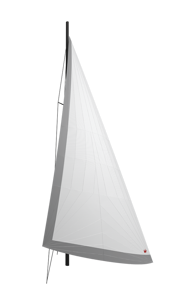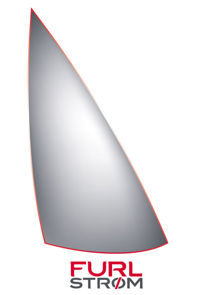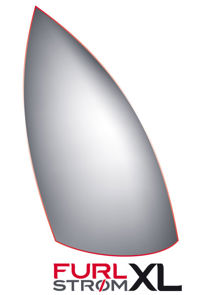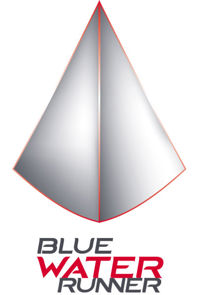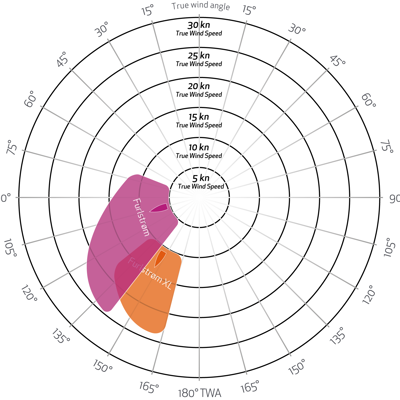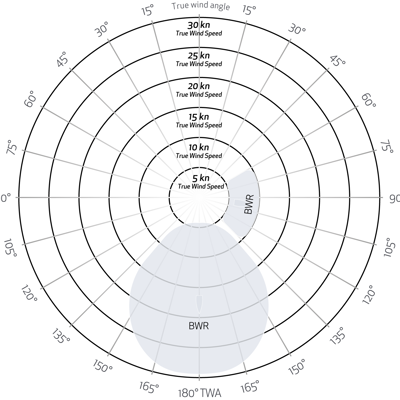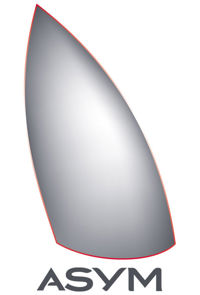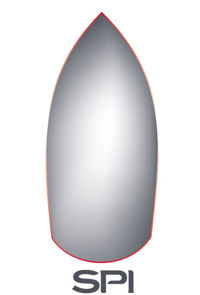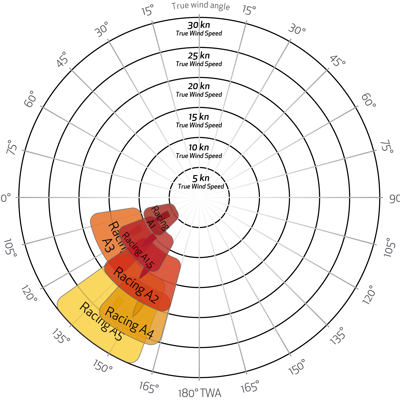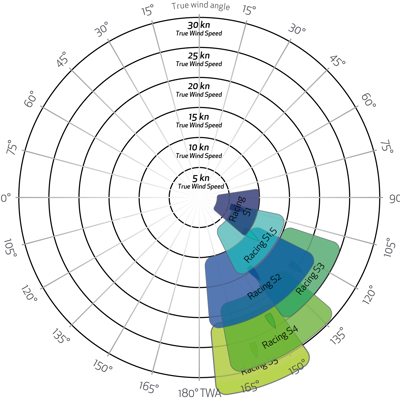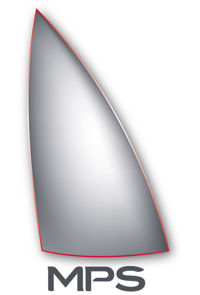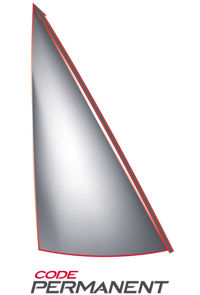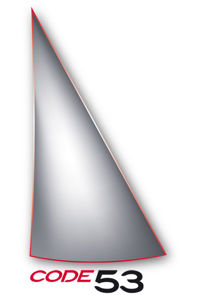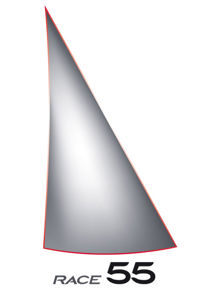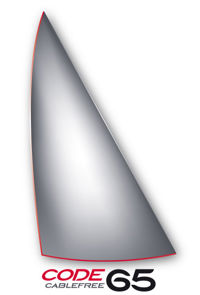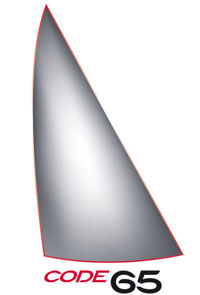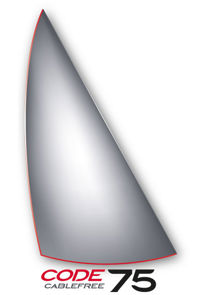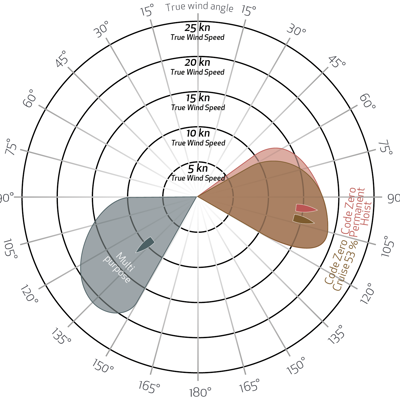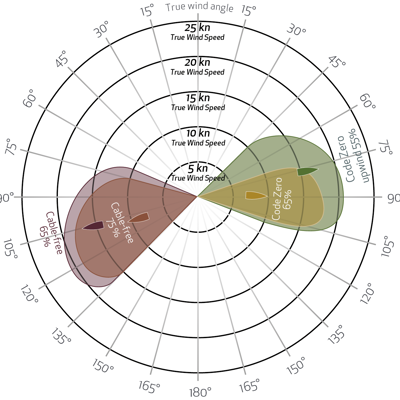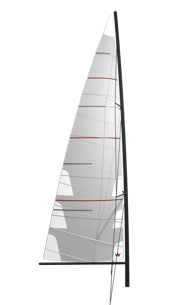

Sejltyper
Købet af ethvert stel sejl begynder altid ved, at man vurderer sine generelle behov og præferencer i forhold til produktet. For os er hvert eneste sejl fra Elvstrøm Sails unikt, og det skal matche dine behov og drømme.
Du kan søge inspiration til dine næste sejl i vores seks segmenter af sejlpræferencer.
Find din sejltype

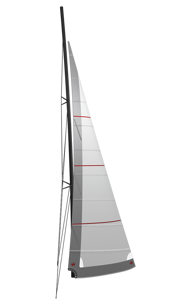
Storsejl
Storsejlet er altid i brug under sejlads, og det skal derfor kunne dække et bredt område af vindvinkler og vindstyrker. Formen i et storsejl udgøres af tre elementer. Der er den designede form, der er materialets stræk og endeligt er der mastens form. Kombinationen af disse tre udgør det færdige produkt.
Blødere (og ofte vævede) materialer har en større tendens til stræk end laminater eller membraner/EPEX har. Det betyder, at et blødt materiale har en bedre generel performance på tværs af forskellige vindforhold, mens hårdere materialer er bedre til specifikke forhold.
Vores udvalg dækker alle typer storsejl - fra konventionelle sejl til cruising over forskellige løsninger til kystsejlads og så selvfølgelig vores letteste og stærkeste sejl, der er målrettet kapsejlads og racing.
Storsejl kan også rulles ind i mast eller bom. Disse sejltyper kan leveres med eller uden sejlpinde. Hele sejlpinde vil give en forbedring af bådens ydelse af to hovedårsager.
Pindene støtter sejlet i at have en positiv kappe (roach), hvilket giver et større aktivt sejlareal end hvis man ikke brugte pindene.
Den anden fordel ved sejlpinde er, at de kan bruges som rebningspunkter (reefing points). Når du ruller sejlet, så sejlpinden er tæt på ekstruderingen, så vil det strække sejlets forlig og give dig et fladere og mere effektivt rebet sejl.
Et "Fat head" eller "Square head" er mest udbredt på flerskrogsbåde, men ses af og til også på kølbåde. Det er en anderledes top på storsejlet, hvilket først og fremmest giver mere sejlareal - men den kantede top har også aerodynamikken med sig, og gør faktisk sejlet mere effektivt i mange vindforhold.
Det hele afhænger imidlertid af, om dit sejl har et bagstag eller dobbelt bagstag, hvor læsiden er løs, så det ikke rammer sejlets leech.

Storsejl - til konventionelle master, rullebomme og in-mast furling
Klik på boksene herunder for at læse mere.
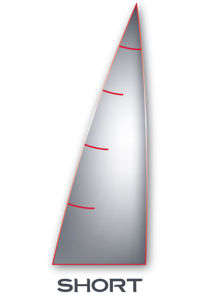
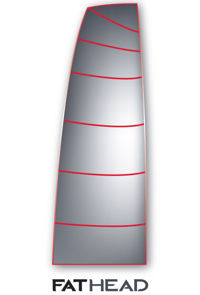
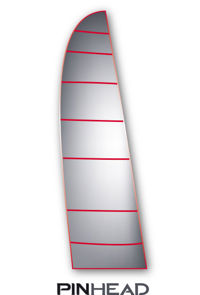
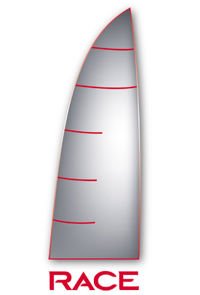
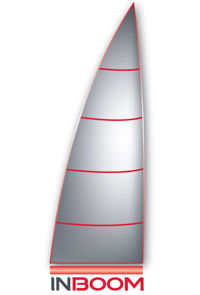
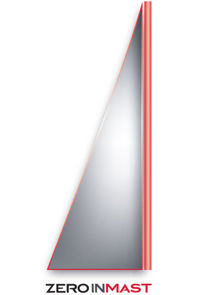
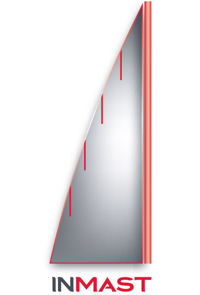
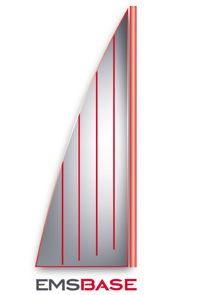
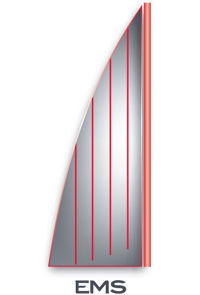
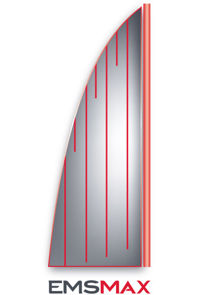
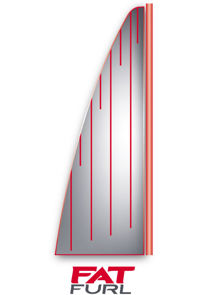
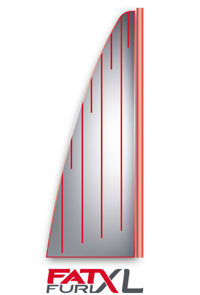
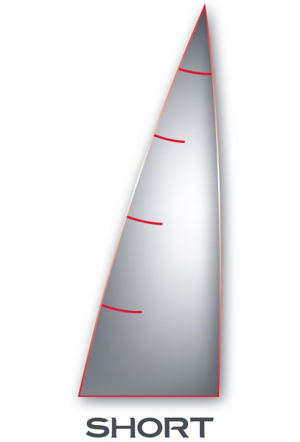
KONVENTIONEL STORSEJL
For monohulls
A conventional mainsail is for keelboats without furling systems. It can be delivered with various options. Shorter battens in the lower parts of the sail make the trimming and depowering easier. If you are looking to cross the oceans and sail downwind for long periods, short battens also mean less chafe against the rig and spreaders. Horizontal full battens in a conventional mainsail help keep the shape of the sail.
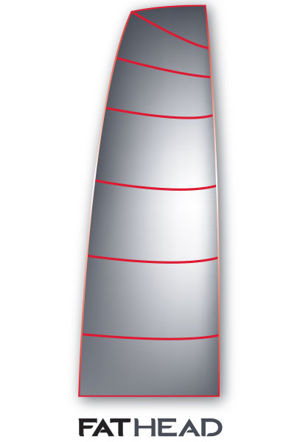
FATHEAD
Square headed main – for mono and multihulls
A fathead mainsail is designed with a square head, making the tuning easier. When the wind increases, the top of the sail will twist, and the result is a flatter sail. In light wind the extra area gives the boat more power. The square head mainsail is with full battens, which make the sail stable when sailing.
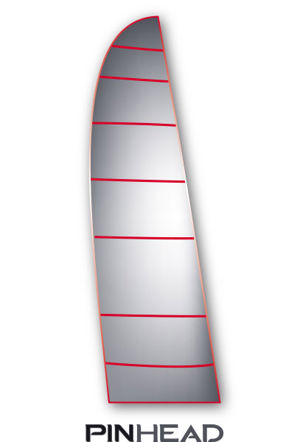
PINHEAD
For cruising multihulls
A pinhead mainsail is the conventional mainsail for multihull boats. The head of this sail is always attached to the headboard car, so fewer movable parts than for the fat head. However, not having a backstay on the multihull, it is room for a large leech roach securing balance to the boat.
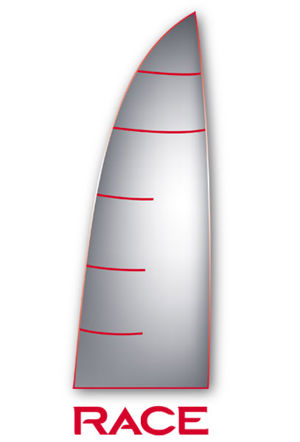
RACE MAIN
100 % custom built
A conventional race mainsail is designed with shape stability and custom details to match your racing boat and rigging. This mainsail will be 100 % custom built to your needs and ambitions. Several options are available once you are in the final steps of configuring your sail with your sail maker.
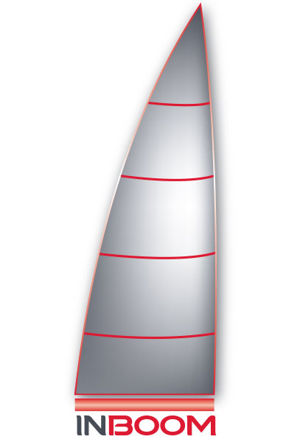
IN-BOOM FURLING MAIN
Built to fit your boom
An in-boom furling mainsail is custom made to fit various furling boom types. The horizontal full battens help keep the shape and ensure that the furling into the boom runs without problems. The lowest battens are also working as reefing point as they stretch out the reefed down mainsail.
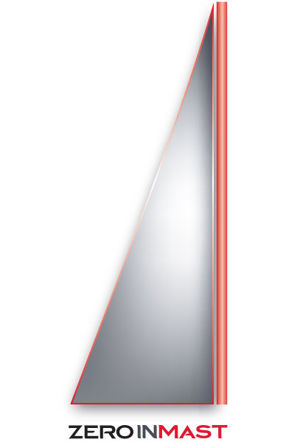
FURLING MAIN (no battens)
Basic in-mast-furling
An in-mast furling mainsail with no battens is the simplest sail within the range of in-mast furling mainsails. It is cost effective and solid and possible to furl into all furling masts, including the ones with a narrow opening.

FURLING MAIN (short battens)
Basic in-mast furling short battened
An in-mast furling mainsail with short battens can be built with a straight leech, which gives a larger and more efficient sail than without the battens. Normally this sail will also fit into all masts, also the ones with narrow opening, as the battens are flat. It is a cost effective and solid sail.
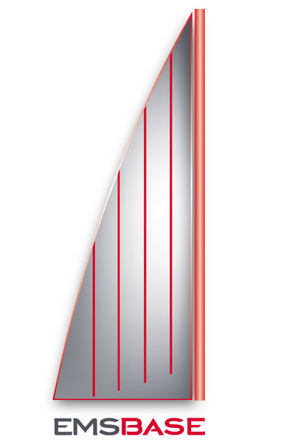
EMS BASE FURLING MAIN
Efficient also with reduced area
An EMS base is an in-mast furling mainsail with full continuous vertical battens. The continuous vertical battens are used as reefing points, stretching the reefed luff, and making the sail flat and efficient.
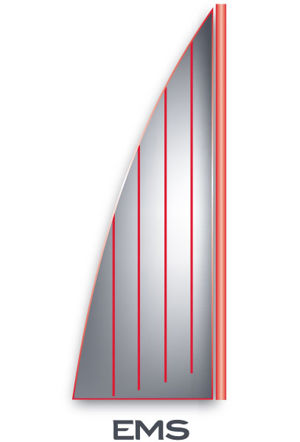
EMS FURLING MAIN
In-mast with full battens
An EMS is an in-mast furling mainsail with full continuous vertical battens. The continuous vertical battens with carbon top provide support for the leech, whether the sail is fully deployed or reefed. The battens are also to be used as reefing points, stretching the reefed luff, and making the sail flat and efficient.
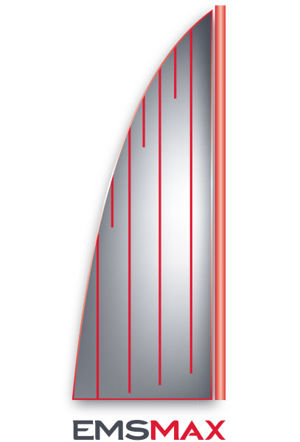
EMS MAX FURLING MAIN
In-mast with extra features
The EMS max sail is the cruising in mast furling mainsail that also win races. The sail area can be designed as a conventional mainsail, but with several extra features. The continuous vertical battens with carbon top provide optimal support for the leech, whether the sail is fully deployed or reefed. The short intermediate battens have the same function. The full battens are also to be used as reefing points, stretching the reefed luff, and making the sail flat and efficient.
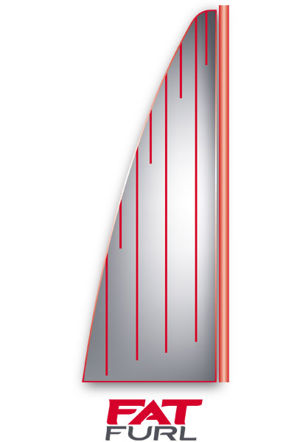
FATFURL FURLING MAIN
In-mast with optimum shape
The FatFurl in-mast furling mainsail is an Elvstrøm Sails innovation. It is designed with optimum shape and maximum sail area. The full vertical battens with a carbon top provide maximum support for the leech, whether the sail is fully deployed or reefed. The full battens are also to be used as reefing points, stretching the reefed luff, and making the sail flat and efficient. The short inter-mediate battens further strengthen the leech.
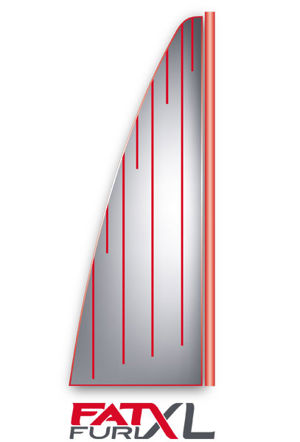
FATFURL XL FURLING MAIN
In-mast with wider headboard
The FatFurl XL sail design is characterized by an XL headboard. The upper 1/3 of the roach is maximized further and crowned with a wider headboard so the top of the sail will open more and twist easily which gives the boat more power. The continuous vertical integrated battens with carbon top provide maximum support for the leech, whether the sail is fully deployed or reefed. The short intermediate battens have the same function.
Forsejl
Forsejl(ene) er normalt i brug når man sejler mod vinden eller med en apparent wind angle på under 90 grader.
Forsejl er monteret på bådens forstag, og den mest udbredte løsning er her et rullesystem - enten med kroge af metal eller med bløde hanke af dyneema og med en lynlås op ad forstaget. Mange kapsejladsbåde benytter en dobbelt hulkehl for at sikre et hurtigere skifte af sejl - her kan man sætte et nyt sejl inden det andet er taget helt ned.
Et forsejl kan også bruges på dybe vindvinkler med en stage modsat storsejlet. Formen i sejlet skabes af tre elementer:
En designet form, materialets stræk og formen på masten. Kombinationen af de tre giver dig det færdige produkt.
Blødere og oftest vævede materialer har en større tendens til stræk end laminater og membraner/EPEX. Det betyder, at et blødere materiale er bedre over et bredt spektre af vindforhold.
Helt som på et storsejl kan man finjustere sejlets form ved at mindske eller øge krumningen på forstaget. Mindre spænding på bagstaget giver mere krumning, hvilket igen giver dig et dybere sejl og flere kræfter i en let brise.
I hårdere vind vil man spænde bagstaget og få et fladere forsejl, ligesom man kan trække genuavognen til sig og ændre skødepunktet. Gør man det, så bliver sejlet fladere - kører man derimod vognen frem, så bliver sejlet dybere.
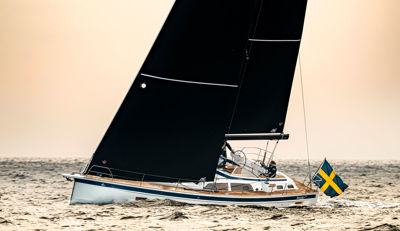
Forsejl med eller uden rullesystem
Klik på boksene herunder for at læse mere.
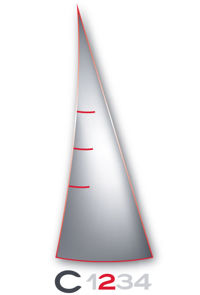
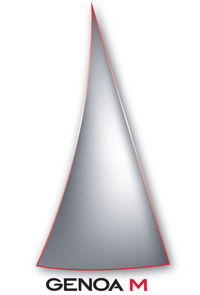
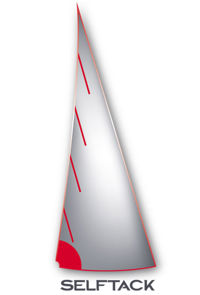
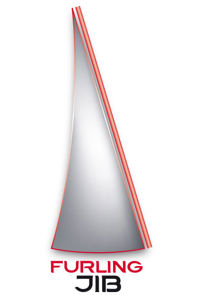
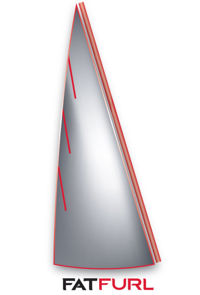
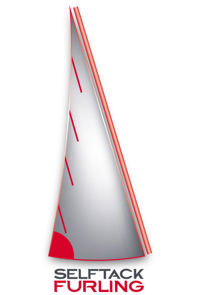
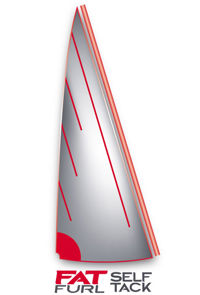
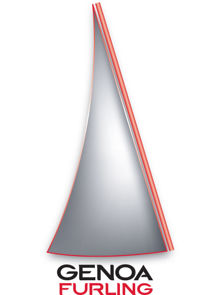
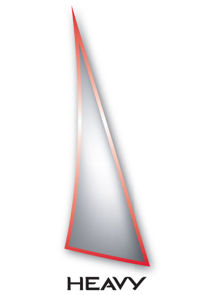
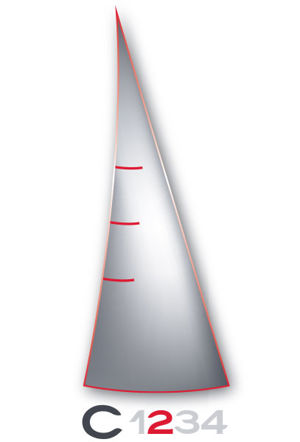
JIB
The racing headsail
Generally, the jib is the working headsail for upwind sailing in most wind conditions. A jib is sheeted in front of the shrouds which gives the possibility of being trimmed with a narrow sheeting angle. The sail may be with or without battens. The jib C2 is the medium, race upwind headsail for boats set up for headsails sheeted in front of the shrouds. Typically, it will “overlap by 100-106%. maximum size and built to perform at max on upwind between 8 and 18 knots TWS. C1 is the lighter and fuller jib, C3 is heavier and smaller in area.
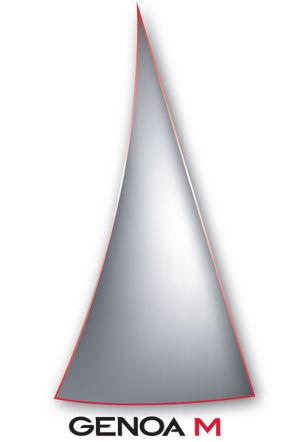
GENOA
The overlapping headsail
A genoa is a sail that overlaps the mast. Normally the LP (perpendicular measurement from clew to luff) is between 135- 150% of the boats J-measurement. This makes the sail efficient in light and medium winds. Since the sail overlaps the rig, battens are not possible. The luff can be attached to the forestay with foil, metal hooks or soft hanks of different types. A light genoa is built for lighter wind conditions with lighter cloth and fuller shape. The heavy genoa is smaller and heavier built.
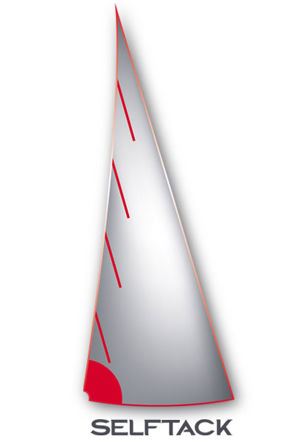
SELFTACKING JIB
The jib for self-tacking track
The self-tacking jib is the working headsail for upwind in most wind conditions, when there is no furling gear to handle the sail, and you are going to sheet it on your self-tacking track. The sail may be with or without battens. A sail with battens will be wider in the upper parts and thus more efficient.
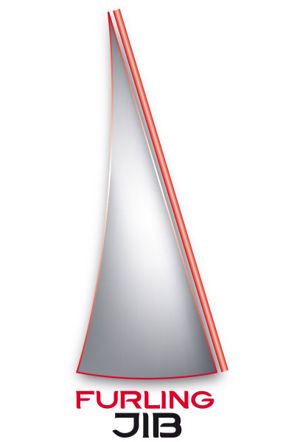
FURLING JIB
The working headsail for furling
The furling jib is the working headsail for upwind sailing in most wind conditions. It is sheeted in front of the shrouds which gives the opportunity of being trimmed with a narrow sheeting angle. The sail may be with or without battens. If you choose battens, they will be parallel with the forestay to make the furling work perfectly. A sail with battens will be slightly bigger than without battens.
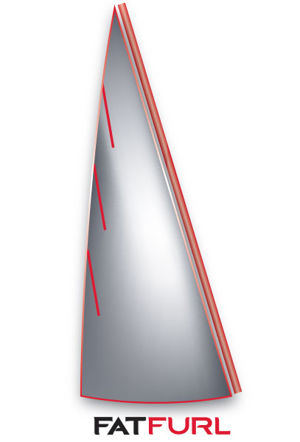
FATFURL JIB
A furling headsail with big roach
The fatfurl jib is the working headsail for upwind sailing in most wind conditions. It is sheeted in front of the shrouds which gives the opportunity of trimming with a narrow sheeting angle. The sail is supplied with both full and short battens that runs parallel to the forestay to make the furling work perfectly. The full battens in front of the sail give the opportunity to design the sail with a large area in the upper part of the sail, which again gives a more efficient sail for all conditions; more powerful in light winds because of the larger sail area and more “self-tuning” in heavy winds because the big roach in the upper parts will twist and flatten the sail in heavy winds.
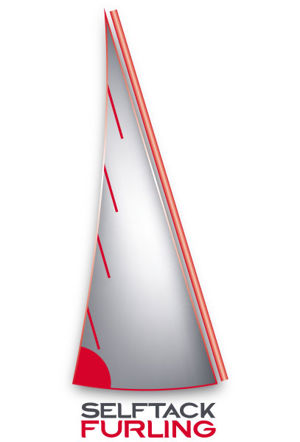
SELFTACKING FURLING JIB
The furling jib for self-tacking track
The self-tacking furling jib is the working headsail for upwind in most wind conditions when the usage is handled with furling gear. The sail is sheeted on your self-tacking track. The sail may be with or without battens. If you choose battens, they will be parallel with the forestay to make the furling work perfectly. A sail with battens will be slightly bigger than without. For many boats/rigs the self-tacking jib may be small in light conditions.
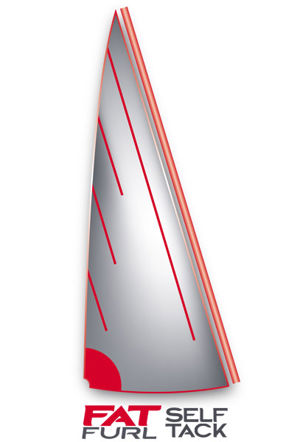
SELFTACKING FATFURL JIB
Jib with big roach for self-tacking track
The self-tacking fat furl jib is the working headsail for upwind in most wind conditions. The sail is sheeted on your self-tacking track. The sail is supplied with both full and short battens that runs parallel to the forestay to make the furling work perfectly. The full battens in front of the sail make it possible to design the sail with a large area in the upper parts of the sail resulting in a more efficient sail for all conditions. More powerful in light winds because of the larger sail area and more “self-tuning” in heavy winds because the big roach in the upper parts will twist and flatten the sail in heavy winds.
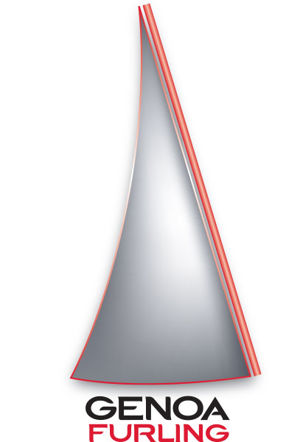
FURLING GENOA
The overlapping headsail for furling
The furling genoa is the primary headsail for boats built for and with a set-up for overlapping headsails. When used fully unfurled, it gives the boat power in light and medium winds. The furling genoa can be delivered with a reefing compensator that makes the shape of the sail flatter and efficient also in reefed condition, when the wind increases.
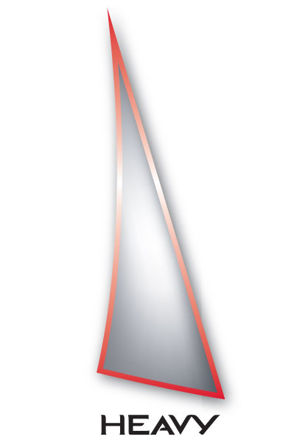
HEAVY WEATHER JIB
The working headsail for heavy weather
The Heavy Weather Jib is perfect for heavy upwind sailing, sparing the working headsail from the toughest conditions. The flat shape and reduced area make heavy weather sailing fun as the boat is well balanced and easy to handle. The sail can be used on the primary forestay or with hooks on an extra forestay. In some cases it is also possible to install an AT cable in the luff.
Downwind
Downwindsejlads (sejlads i medvind) med sejl specifikt til formålet er om muligt den mest komfortable form for sejlads man overhovedet kan sejle. Det kaldes ofte også for champagnesejlads, for det er bare cruising, når det er bedst.
Udvalget af sejl til medvind er stort, og er du en sejler med forkærlighed for cruising, så er det en god idé at konsultere din lokale sejlmager og få en god snak om mulighederne for din båd og dine behov.

Furlstrøms og Blue Water Runner
Elvstrøm Sails har også en sejltype, der hedder Furlstrøm. Det er også et rullesejl, men det er rullet på et anti-torsionskabel fra bund til top.
Blue Water Runner er et sejl optimeret til let sejlads på dybe vindvinkler. Det er også et rullesejl, men forener de gode egenskaber ved et klassisk downwindsejl med meget nem håndtering, da det kan rulles. Blue Water Runner er derfor også et glimrende valg til shorthanded eller sågar enmandssejlads.
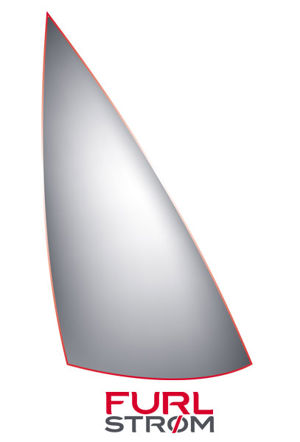
FURLSTRØM
Light-weight downwind sail
The FurlStrøm design is an Elvstrøm Sails innovation. It is a great cruising sail with the performance close to a gennaker and the handling of a genoa. It is characterized by a flat cut and straight luff for better pointing and with a complete furling system for easy handling. The FurlStrøm comes complete with a high-quality furling system.

FURLSTRØM XL
“Top down – furling genaker”
The Furlstrøm XL is a Gennaker that furls around an anti-torsion cable outside the sail, attached to the cable in top and to a swiveling tack arrangement in the bottom of the furling unit. It furls from the top and down.
It can be used at the same angles as a cruising gennaker. It has a slightly smaller head angle for better furling.
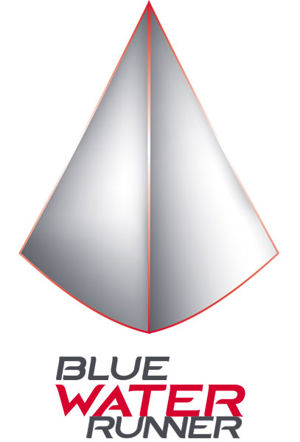
BLUE-WATER RUNNER
Twin furling sail
The Blue Water Runner is a twin furling downwind sail, which is easy to furl away from the safety of the cockpit. The sail is a 3-in-1 solution, working not only as a twin furling downwind-runner, but also as an ultra-light genoa and a reacher.
Spilere
Spilere findes i to konfigurationer - symmetriske og asymmetriske.
Symmetriske spilere bruges med en spilerstage, som man flytter fra den ene side til den anden, hver gang man bommer. Disse sejl er mindre udbredte i dag, men er til gengæld alsidige når det kommer til vindvinkler.
Den assymetriske spiler kaldes ofte en genaker. Disse er monteret i bådens centerlinie og ofte på et bovspryd, så man ved bomning flytter skødehjørnet fra side til side. Disse sejl kan bruges med en spisok for at gøre håndteringen lettere, ligesom man også kan bruge det med et rullesystem, som ruller sejlet fra top til bund.
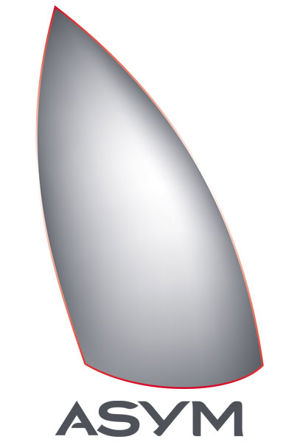
ASSYMETRIC SPINNAKER
Gennaker
The asymmetric spinnaker, also referred to as a gennaker is an all-round asymmetric downwind sail with optimized shape and size to make the sail stable for easy sailing. In light winds you may come up as high as 90 TWA, and apart from that this sail will cover all angles from 120 to 160 TWA in medium conditions. Can be used with a spi-sok for easier handling.
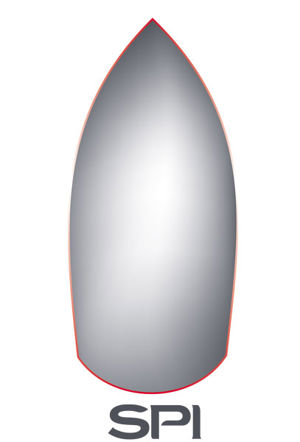
SYMMETRIC SPINNAKER
All-round spinnaker
The Spinnaker is an all-round spinnaker with optimized shape and size to make the sail stable for easy sailing. In light winds you may come up as high as 110 TWA, and apart from that this spinnaker will cover all angles from 140 and lower in medium conditions. Can be used with a spi-sok for easier handling.
Code
Codesejlet er mellemtingen mellem et forsejl og et fuldblods downwindsejl. Her er en Code en god mellemting, og kan give dig nem og effektiv sejlads i lettere vindforhold.
Familien af Codesejl er bred, men de har alle dét til fælles, at de sættes, mens de er rullede - og når de er oppe, så ruller du ud og sejler afsted. Inden du tager sejlet ned, ruller du det ind igen, og derfor er de ekstremt nemme at håndtere.
Codesejl kan produceres med et antitorsionskabel i forliget, og laves sejlet med UV-cover, kan det også efterlades hejst. De kabelfrie codesejl er også populære hos os, for de dækker et bredere spektrum af vindvinkler, fordi de har en positiv forligskurve og derfor nærmer sig det, du også får med en assymetrisk spiler.
Et kabelfrit codesejl har et stramt forlig, når de er rullede, men løsner op, når man sejler. Codesejl kan leveres i forskellige materialer - fra EPEX til radiallaminerede og radiale, vævede materialer. Jo højere en apparent wind speed som sejlet udsættes for, des mere har du brug for et materiale uden stræk. Derfor er EPEX det optimale materialevalg til et codesejl til at sejle mod vinden og med større både. Omvendt er vævet polyester bedst til et kabelfrit codesejl.
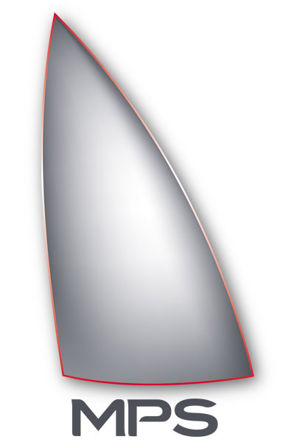
MULTIPURPOSE CODE
A low-budget code sail
The multipurpose code is a low-budget code sail, that however still works in a big variations of wind angles. It is easy to handle as you hoist it furled around a cable sewn into the luff. Unfurl and sail away. The sail is built from woven polyester.
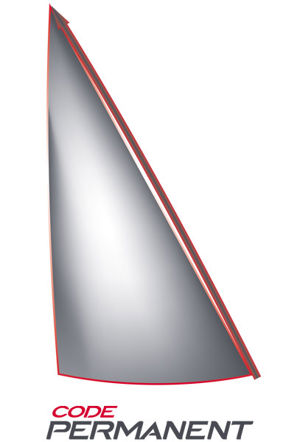
CODE PERMANENT HOIST
UV protected code sail
The UV-protected Code Permanent hoist is designed to stay up and ready for use all the time. The sail can be hoisted in the harbor and can then be left up all day long, overnight, and even for weeks while on your way. The sail has a high clew for better downwind performance and visibility at sea. The sail is used on an Anti-Torsion cable and the furling system is bottom/up.

CODE ZERO CRUISE 53%
Cruising code zero 53 %
Comfort, easy handling, and power. You hoist this sail furled on its own luff Anti-Torsion cable. Un-furl the sail and instantly you power the boat up and make it go. The Cruising code is designed so you can prepare and hoist the sail in the harbor before you head out. When you finish using the sail, you furl it away and return to your mooring and take the sail down. You will be able to use the sail in angles between 70° TWA to 150° TWA depending on the wind speed.
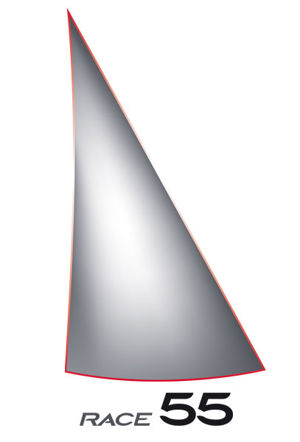
CODE RACE UPWIND 55%
Code Race upwind 55 %
The racing Code Zero is the missing link between your up- and downwind sails. It comes in different designs, suited optimally to the rating-/class rules and the rest of your sail inventory. It will be a lightweight sail that is set flying, furled on an anti-torsion cable in the luff which makes it quick to set and retrieve. Produced in the stable EPEX membrane, film on film surface and technora fibers, this sail is designed to work optimally in angles between 50° TWA to 110° TWA depending on the wind speed. Measures in most rules as a headsail.
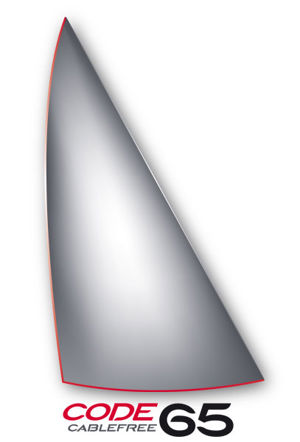
CRUSING CABLE-FREE CODE
Cruising cable-free code 65%
A cable-free code sail is designed with a high-density load bearing fiber luff, that replaces the cable. The Cable-free Code Zero is easy to handle and store. With the improved positive luff, you gain wider sailing angles compared to a traditional Code Zero - and more power. It is also a very stable sail to use if sailing butterfly as well, on the opposite side of the main.
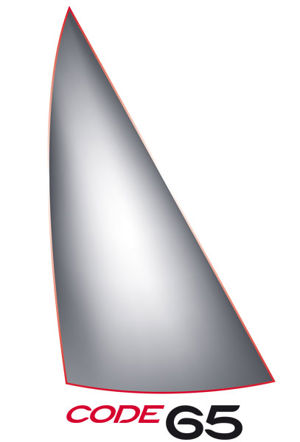
CODE ZERO 65%
Code Zero 65% - larger cruising code / rating optimized code
The code Zero is the missing link between your up- and downwind sails. It comes in different designs, suited optimally to the rating-/class rules and the rest of your sail inventory. It will be a lightweight sail that is set flying, furled on an anti-torsion cable in the luff which makes it quick to set and retrieve. The sail is designed to work optimally in angles between 70° TWA to 110° TWA depending on the wind speed.
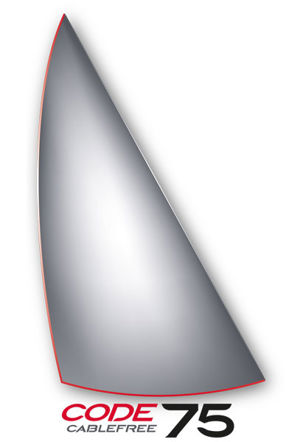
RACING CABLE-FREE CODE
RACING CABLE-FREE CODE
A cable-free code sail is designed with a high-density load bearing fiber luff, that replaces the cable. The Cable-free Code Zero is easy to handle and store. With the improved positive luff, you gain wider sailing angles compared to a traditional Code Zero - and more power. Different rating rules demands different girth measurements on the sail. We will advice you to specify the perfect sail for your boat, rating rule and use.
Configure your sails

Behov
Vores højtkvalificerede Elvstrøm SailPoints står altid klar med råd og vejledning til dit næste sejlkøb. Vi er altid klar til at hjælpe dig med at finde en løsning, som dækker dine behov - og til at måle din båd og rig op til et nyt setup. Hvert sejl er unikt for os.

